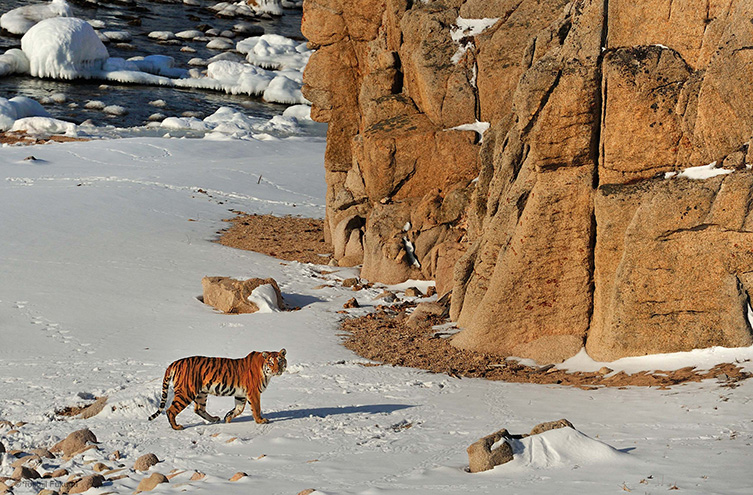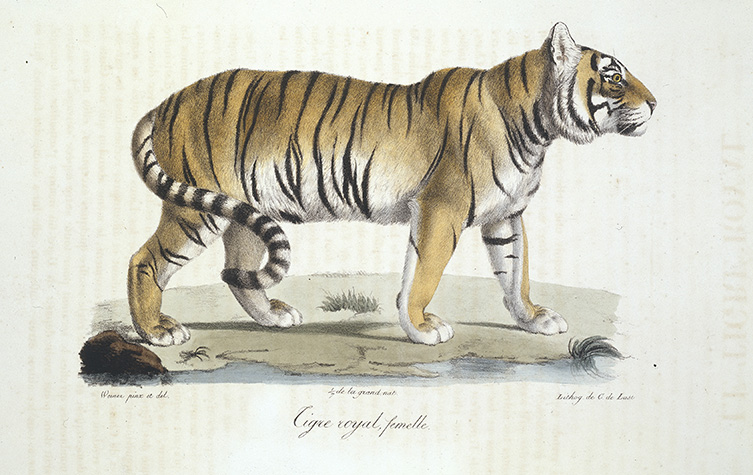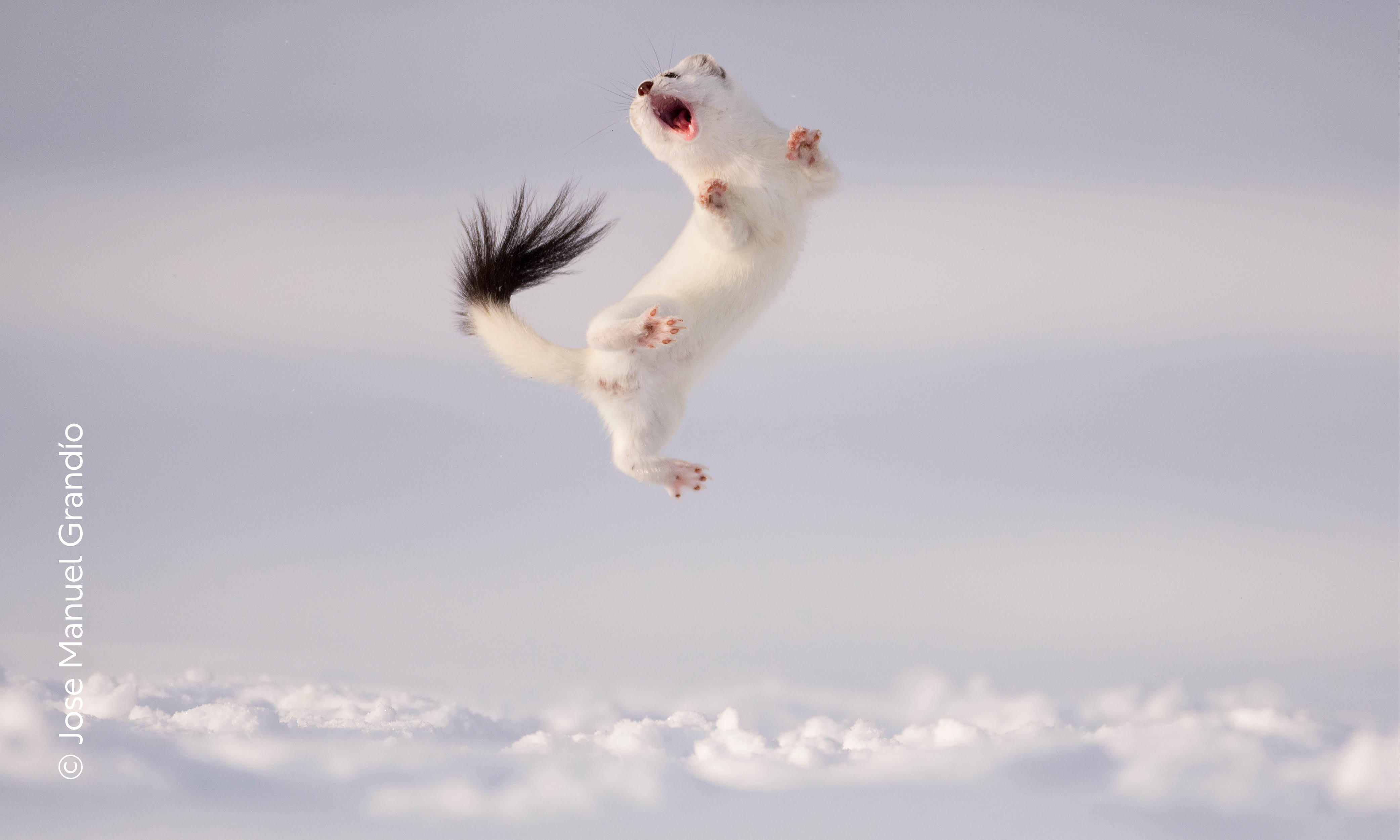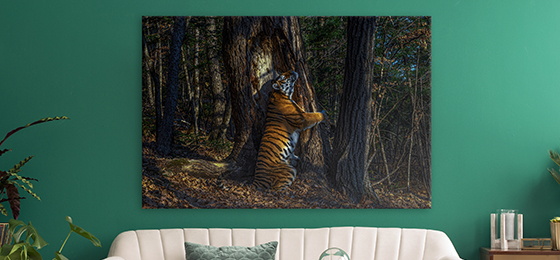Sergey Gorshkov has been awarded the title of Wildlife Photographer of the Year for his exceptional image of a Siberian tiger scent-marking in a remote forest of Russia.

The Embrace was the overall winner in the fifty-sixth Wildlife Photographer of the Year competition.
© Sergey Gorshkov
The competition jury were delighted to see an image of a tiger scent-marking, a rarely photographed behaviour. Judge Susan McElhinney described the winning image as 'a rare and intimate glimpse of a very endangered species going about its daily rounds of checking its territorial boundaries or scent-marking, leaving messages and reading the messages of other cats'.
This important part of their behaviour helps tigers to avoid conflict with each other. As judge Jaime Rojo explains, 'These Siberian tigers really need large, well-protected tracts of habitat to survive. Each of them has a big territory.'
Sadly, large-scale deforestation in the region has threatened the habitat of Siberian tigers. As parts of the forest are destroyed, these animals are being forced further into each other's territory, creating an increased chance of conflict.
This, Jaime explains, is why tigers do scent marking: 'They are trying to avoid conflict. If another male trespasses on their territory there will be confrontation, and wild animals try and avoid confrontation.'
Wild nature
Siberian (or Amur) tigers live close to the far eastern coast of Russia and along its border with China and North Korea. Aside from being a visually impressive image, Sergey has managed to photograph an extremely rare animal exhibiting its natural behaviour in a truly wild landscape.
For the judges, it was this combination of beauty and untouched nature that made it a winning image. Rosamund 'Roz' Kidman Cox OBE, Chair of the Jury, explains why the image was so special to her: 'It's such an intimate scene, that powerful arm embracing such a huge trunk and the expression of sheer ecstasy. It's a tiger image quite unlike any other.
'But it's also the Siberian forest environment that makes this picture so special. It's so very different, so mysterious - and with that heavenly light the scene is so rich in light and shade, detail and texture - that it's almost as if the composition has been painted in oils.'

Tiger untrapped was awarded the Gerald Durrell Award for Endangered Species in 2013.
© Toshiji Fukuda
While the Siberian landscape is rich in beauty and makes a perfect habitat for the elusive Amur tiger, it remains a difficult landscape for a photographer to work in. Sergey explains, 'The impenetrable taiga is an ideal habitat for the Siberian tiger, but it is very difficult to photograph it here.'
Sergey relied on the use of camera traps to get his perfectly unobtrusive image. For him, this made the project all the more interesting. He says, 'I don't see the tiger and I can only predict what will happen in front of the camera, thus I become the director and operator of an invisible scene.
'In January 2019, I installed my first Nikon hidden camera near this fir, and only in November I managed to capture a tiger. I feel lucky to get such rare shots.'
For the judges, Sergey's use of camera traps helped to secure his title as Wildlife Photographer of the Year. Susan adds, 'There is no sense of intrusion by photographer or camera gear, only the leaf-filtered afternoon Sun illuminating a scene we might dream of: an established forest that acts as home, hunting ground, protector for generations of Siberian tigers.'
It was the dappled, natural lighting of the scene that benefitted the image, according to Jaime. He says, 'There was something unique to it and I think it's the use of natural light. We often see these camera trap images with artificial light, but in this case it's clear that there are no flashes, and it is just the light that was there and I think that makes it different.'
A species on the brink
Much like its cousins in Java and Bali, the Siberian tiger was threatened with extinction in the mid-twentieth century. But thanks to legal protection and careful conservation efforts, their numbers have slowly begun to increase.

Panthera tigris tigris, Bengal tiger © The Trustees of the Natural History Museum, London
Nonetheless, Sergey is concerned about the species' survival. He says, 'I am very worried that the tiger has less time - the Chinese market for drugs based on tiger bones, skin and claws is thriving and the fewer tigers that remain, the higher their cost.'
Photographs such as this one are vital to the conservation and protection of threatened species. In capturing this serene moment, Sergey has been able to share with the world the behaviour of this majestic cat while calling for the conservation of Siberia's habitats.
When asked what makes this image so important, Jamie considered its contribution to the competition. He says, 'I think this image summarises very well the spirit of the competition. We are talking about Wildlife Photographer of the Year here, and what is wilder than a Siberian tiger in the wilderness of Russia?
'I think this image has potential to become an icon for the conservation of wilderness and wild places because it shows one of the most powerful land predators - also one of the most endangered ones - in its habitat, and it shows an intricate relationship between the species and the habitat.'
Roz adds, 'What makes it doubly special is when you learn that this is not only a highly endangered animal, photographed in the wild, but in a region of Siberia where rigorous protection of a huge area of forest is actually leading to an increase in tiger numbers.
'Now that is something truly grand.'
Find out more from this year's winner

Explore the gallery
Wildlife Photographer of the Year tells the incredible stories of life on our planet through powerful photography and expert insight.

Bring the exhibition home
You can shop our new and sustainably produced Wildlife Photographer of the Year 2020 range now.
Don't miss a thing
Receive email updates about our news, science, exhibitions, events, products, services and fundraising activities. We may occasionally include third-party content from our corporate partners and other museums. We will not share your personal details with these third parties. You must be over the age of 13. Privacy notice.
Follow us on social media